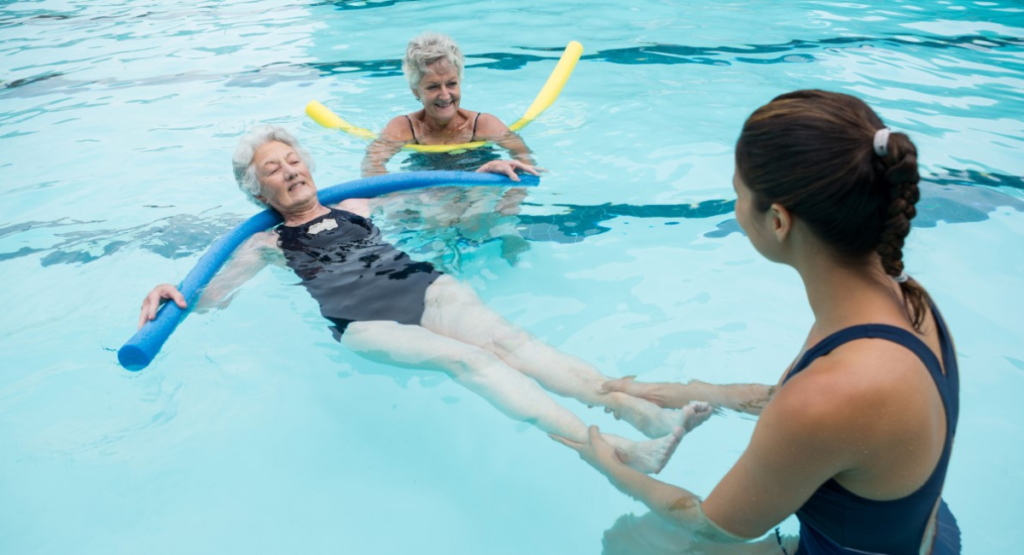Parkinson’s disease is a progressive neurological disorder that affects millions of people worldwide. Characterized by tremors, stiffness, and impaired balance, Parkinson’s poses significant challenges to daily functioning and quality of life. While there is no cure for Parkinson’s, various treatment modalities aim to manage symptoms and improve overall well-being. Among these modalities, hydrotherapy emerges as a promising approach for enhancing balance and mobility in individuals with Parkinson’s.
What is Hydrotherapy
Hydrotherapy, also known as aquatic therapy, harnesses the healing properties of water to facilitate physical rehabilitation. By engaging in exercises and movements within a controlled aquatic environment, individuals can experience reduced joint strain, increased range of motion, and enhanced muscular strength. What sets hydrotherapy apart is its buoyancy, which effectively supports the body and lessens the impact on joints, making it particularly beneficial for those with mobility issues.
Tailoring Hydrotherapy for Parkinson’s Patients
Parkinson’s disease presents a myriad of challenges, including muscle stiffness, tremors, and impaired balance. Traditional land-based exercises may prove daunting for individuals with Parkinson’s due to the risk of falls and injury. This is where hydrotherapy shines. The buoyancy of water provides a supportive medium for movement, allowing patients to engage in exercises with reduced fear of falling.
Moreover, hydrotherapy sessions can be customized to target specific areas of concern for Parkinson’s patients. Balance exercises, gait training, and functional movements can all be incorporated into a hydrotherapy regimen, tailored to the individual’s unique needs and capabilities. With the guidance of skilled therapists, patients can gradually build strength, improve coordination, and regain confidence in their mobility.
The Benefits of Hydrotherapy for Parkinson’s Patients
Buoyancy and Support
Water’s buoyant force reduces the effects of gravity on the body, making it easier for Parkinson’s patients to move with less strain on their joints and muscles. The supportive nature of water enables individuals to perform exercises and movements that may be challenging or unsafe on land, thereby enhancing confidence and reducing the fear of falling.
Resistance Training
In addition to buoyancy, water provides natural resistance to movement, requiring individuals to exert effort to overcome it. This resistance helps strengthen muscles, improve endurance, and enhance overall fitness. For Parkinson’s patients, resistance training in water can target specific muscle groups involved in balance and mobility, facilitating functional improvements and greater independence in daily activities.
Range of Motion and Flexibility
The warmth of the water in hydrotherapy pools promotes relaxation and increases blood flow to muscles, resulting in improved flexibility and range of motion. This is particularly beneficial for individuals with Parkinson’s, who often experience stiffness and rigidity in their muscles. By performing gentle stretching exercises and joint movements in water, patients can alleviate muscle tension and enhance flexibility, thereby enhancing their ability to move more freely and with greater ease.
Neurological Benefits
Beyond the physical advantages, hydrotherapy may also offer neurological benefits for Parkinson’s patients. The sensory stimulation provided by water, combined with the rhythmic nature of aquatic movements, can positively influence the brain’s motor pathways and help improve coordination and motor control. Additionally, the calming effect of water can reduce stress and anxiety, which are common non-motor symptoms experienced by individuals with Parkinson’s.
Incorporating Hydrotherapy into Parkinson’s Care Plans
Integrating hydrotherapy into the comprehensive care plans of Parkinson’s patients requires collaboration among healthcare professionals, including neurologists, physical therapists, and aquatic therapists. A thorough assessment of the individual’s abilities, goals, and medical history is essential to tailor hydrotherapy sessions to meet their specific needs and preferences.
Hydrotherapy sessions typically involve a combination of exercises, including:
Balance training: Activities that challenge stability and equilibrium, such as standing on one leg or walking heel-to-toe in the water.
Gait training: Practice walking with proper posture and stride length to improve gait patterns and reduce the risk of freezing episodes.
Strength and endurance exercises: Resistance-based movements to target muscle weakness and build stamina for daily activities.
Flexibility and stretching routines: Gentle stretches and range-of-motion exercises to alleviate muscle stiffness and improve joint mobility.
Conclusion
Hydrotherapy holds tremendous promise as a therapeutic modality for enhancing balance and mobility in individuals with Parkinson’s disease. By harnessing the unique properties of water, hydrotherapy provides a safe, effective, and enjoyable means of rehabilitation that addresses the specific needs and challenges faced by Parkinson’s patients. As awareness of the benefits of hydrotherapy continues to grow, it is my hope that more individuals with Parkinson’s will have access to this transformative form of treatment, empowering them to live life to the fullest despite the challenges posed by their condition.
We are India’s first comprehensive continuum care provider. We provide multidisciplinary out of hospital care to acute and post-acute and chronically ill patients at our critical care facilities and your home.


